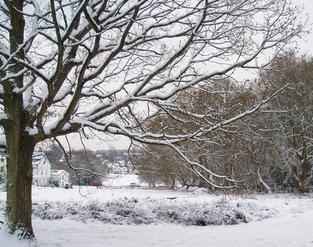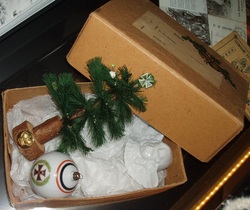
I understand that Frank Capra’s film was not a big success when it was first released. Like one of my other long-time favourites, The Sound of Music, it is accused by its detractors of being clichéd and sentimental. But for me, like all good tales, it simply heightens the life of the story it portrays, and speaks to the heart.
Dickens does this too for me. The more life I experience, its joys and sorrows, successes and failures, the more I am moved by stories like those of Ebenezer Scrooge, and George Bailey. They are at opposite ends of the spectrum – Ebenezer having lived only for himself, closing his heart to generosity and love, George having foregone his hopes and dreams in the service of others, a man who could not put himself first when he perceived others were in need. They are both saved by a ministering supernatural being: the Ghosts of Christmas Past, Present and Future, and the Second-Class Angel Clarence. They share a common experience and their eyes are opened. Ebenezer Scrooge is transformed, redeemed, and becomes a man who loves to give. George Bailey sees that the love of his family, friends and fellow man is all that really matters.
I saw James Stewart once talking about It’s A Wonderful Life – how a number of people had written to him saying that they were at the end of their inner resources, and contemplating suicide, that they had seen the film, and how it had encouraged them to go on.
It’s a beautifully crafted film with a fantastic cast of actors – I understand Capra hand-picked every extra, such was his attention to detail. Some scenes, like the one where Signor Martini and family bundle into the Bailey car and drive to their new house, are reminiscent of a Brueghel painting.
Joseph Campbell said that we need myth to help us to fully understand ourselves. At this time of year, having grown up in mid 20th century Britain, not in a particularly religious family, but certainly influenced by the legacy of Christian teaching and customs, I like to set out my mother’s hand-knitted Nativity set and remember the Christmas story, make an effort to see loved ones, listen to sacred music and sing-along-a Handel’s Messiah.
Sometimes when I’m rushing around like ‘Roadrunner’ in that pre-Christmas build-up, I need to remember that presents, whether big or small, are not as important as giving someone your full and undivided attention – a thing children need above all else.
Whatever your spiritual practice, I hope you enjoy this festival of light at the darkest time of the year, and that 2014 will be a healthy and happy one for you.



 RSS Feed
RSS Feed
